Pharmacy in World War II: The Military
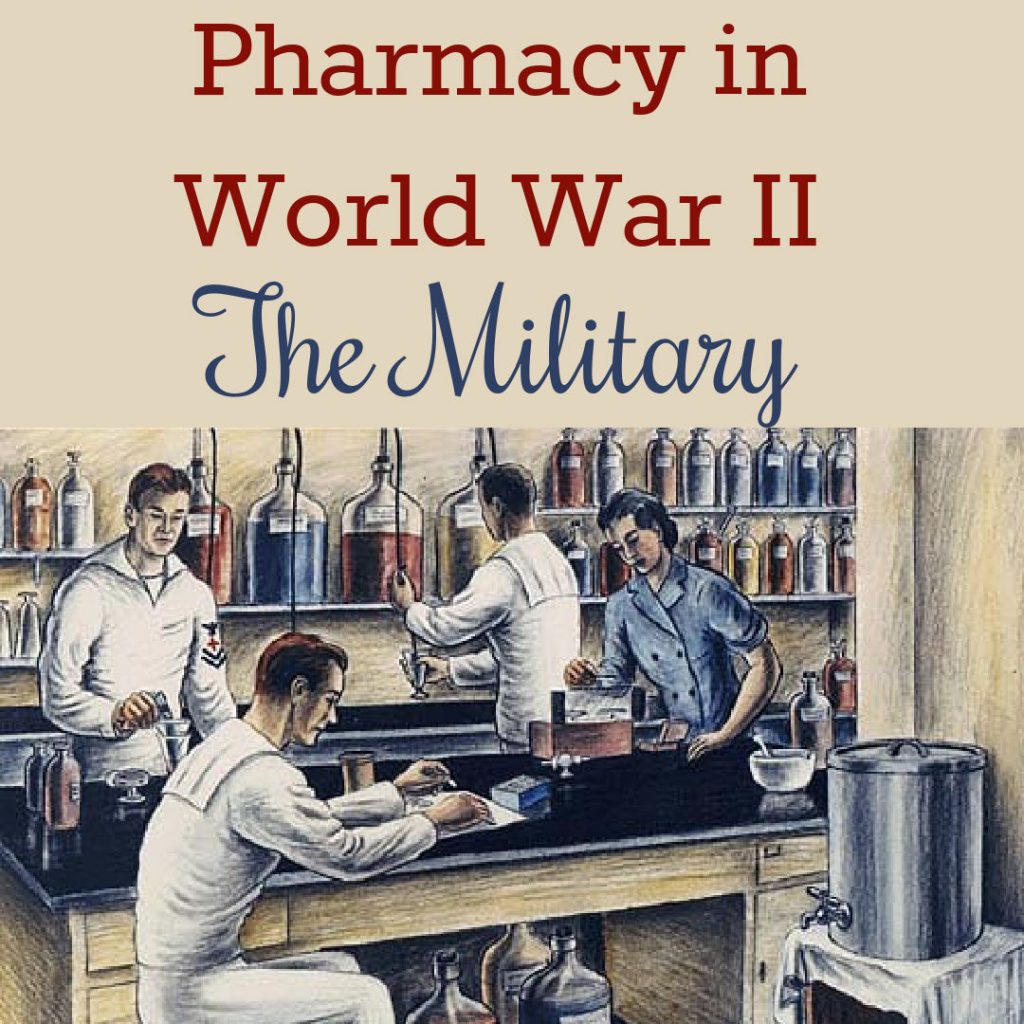
As a former pharmacist, I’ve found the history of pharmacy in World War II fascinating. So fascinating that I’ve written two novels featuring pharmacists. In On Distant Shores, pharmacist John Hutchinson serves in a pharmacy in an Army evacuation hospital in Italy, and in Anchor in the Storm, Lillian Avery works as a pharmacist in a drugstore in Boston during World War II.
Much about my profession has changed, but some things have not—the personal concern for patients, the difficult balance between health care and business, and the struggle to gain respect in the physician-dominated health-care world. First we looked at the role of the pharmacist in the 1940s, then we took a visit to the local drugstore and saw how its role changed during the war, and today I’ll review the rather shocking role—or lack thereof—of pharmacy and pharmacists in the US military.
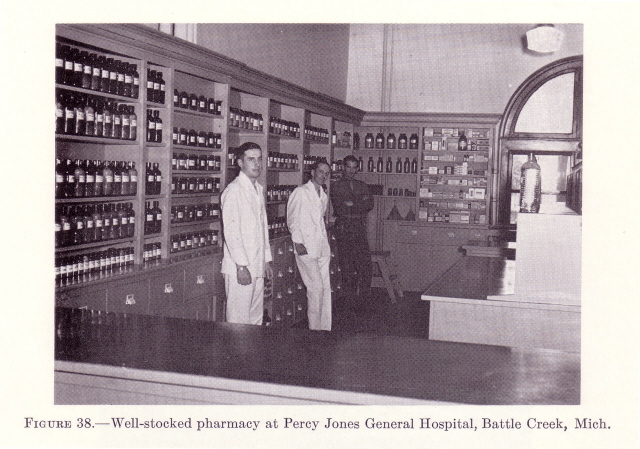
Pharmacy at Percy Jones General Hospital, Battle Creek, MI, WWII (US National Archives)
While researching the military medical system for my World War II novels, I read about physicians and nurses, dentists and veterinarians. But where were the pharmacists? In the civilian world, the physician prescribes medication, the pharmacist purchases, compounds, and dispenses, and the patient or nurse administers. I discovered the wartime military system differed. As a pharmacist I was baffled and intrigued.
Drug Distribution in the Military
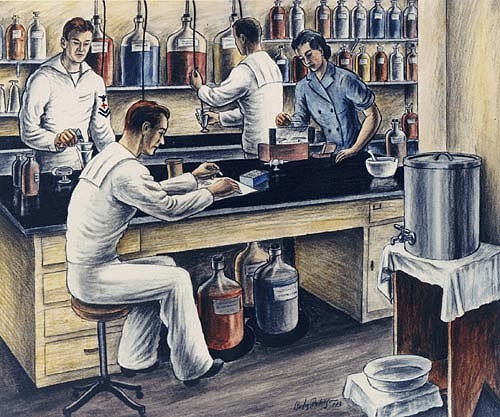
A WAVE and three enlisted pharmacist’s mates working at a lab bench, 1943. (US Naval History & Heritage Command)
In the US Army and Navy, outpatient prescriptions were filled at base or unit dispensaries, while inpatient orders were filled at hospital pharmacies. Both dispensaries and pharmacies were staffed by enlisted personnel—pharmacy technicians in the Army and pharmacist’s mates in the Navy—under the control of physicians. In 1936, the pre-war Army had forty graduate pharmacists serving as enlisted technicians.
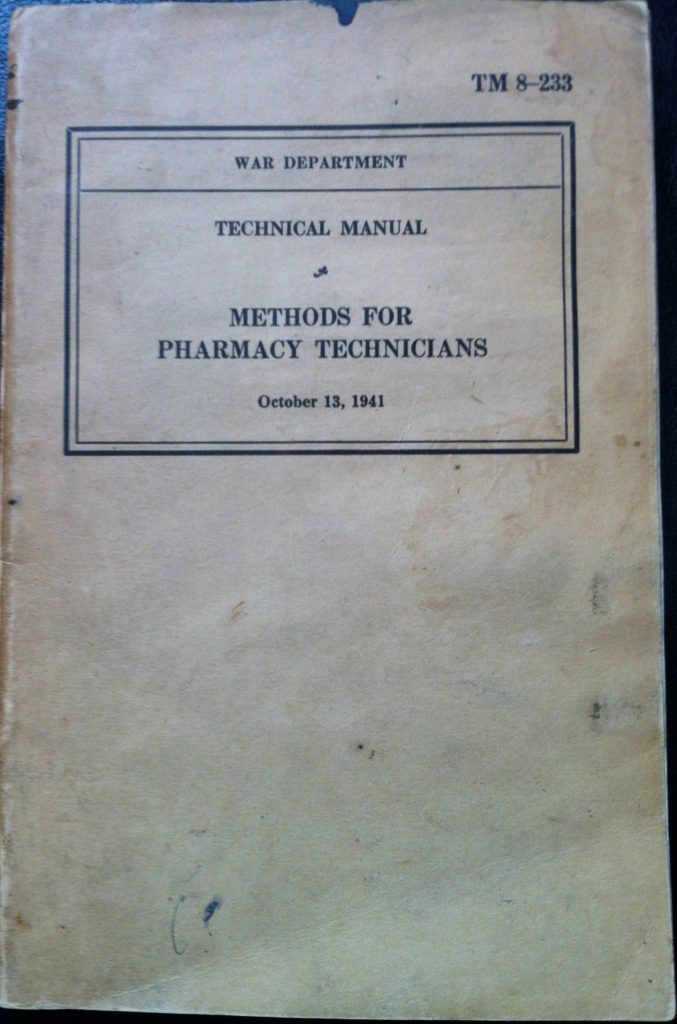
Army technical manual TM 8-233 Methods for Pharmacy Technicians October 13, 1941 (Sarah Sundin collection)
Pharmacy technicians did not need any previous health care background or education. They went through a three-month program based on practical training rather than scientific understanding.
Medical Administrative Corps
For decades, pharmacy organizations had lobbied for an Army Pharmacy Corps with commissioned pharmacists. Indeed, most nations had similar corps. However, the US Army Medical Department thought of pharmacists in a condescending manner as businessmen rather than professionals, and they saw the Army drug distribution system as adequate.
The Medical Administrative Corps was established in 1920 as a compromise. The MAC was responsible for administrative duties within the Medical Department, including medication procurement and distribution. In 1936, the MAC was permitted to commission sixteen pharmacists, with future appointments in the MAC restricted to graduate pharmacists.
The number of officers in the MAC increased during the war. In 1943 six hundred graduate pharmacists served as MAC officers—but none of them served as pharmacists.
Options for Pharmacists
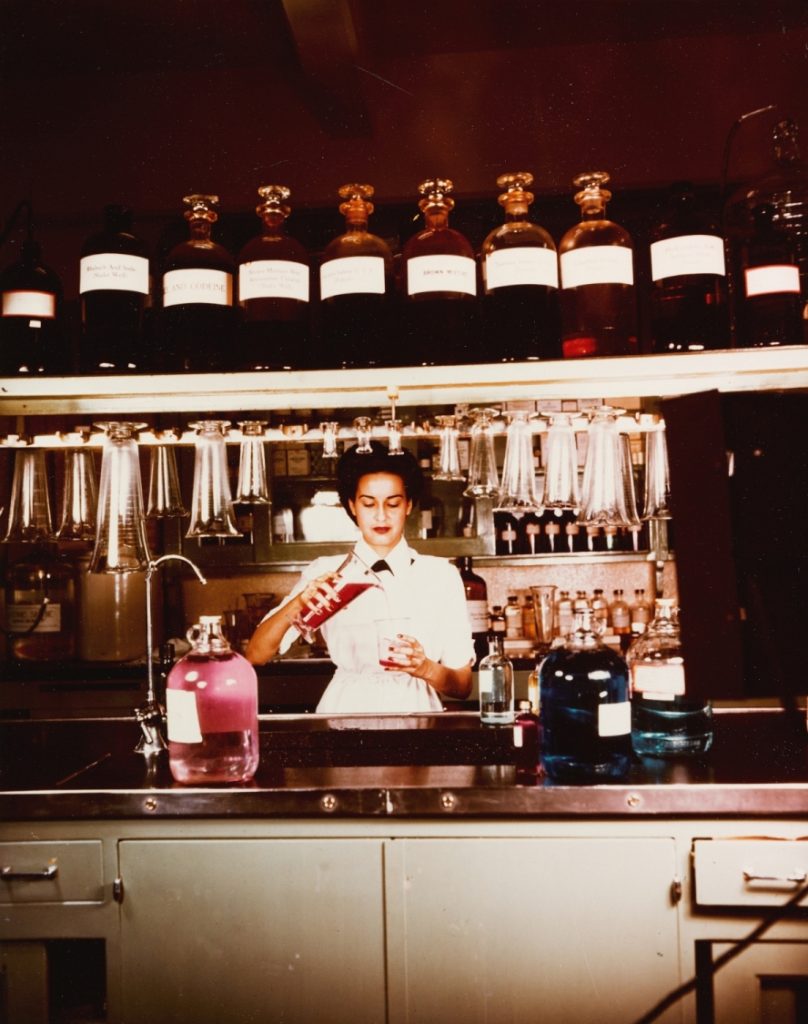
WAVES Pharmacist’s Mate 3rd Class Mercedes Palacios, US Naval Hospital, San Diego, California, spring 1945. A graduate of the University of Puerto Rico and a certified pharmacist in civilian life, she enlisted in the Women’s Reserve in December 1944. At the time of the photograph, PhM3c Palacios was one of 1000 WAVES on duty at the San Diego Naval Hospital. (US Naval History and Heritage Command)
Since most draft-age pharmacists had four-year bachelor’s degrees, they were eligible to serve as officers. While physicians, nurses, dentists, and veterinarians were commissioned as officers and placed in appropriate positions, no such option was available for pharmacists.
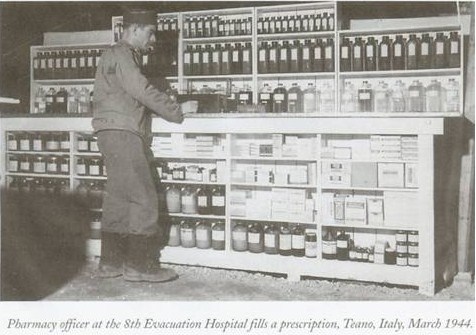
Pharmacist at the US 8th Evacuation Hospital, Teano, Italy, March 1944 (US National Archives)
Upon enlistment, pharmacists could apply for the Army Officer Candidate School, but upon graduation, they could be assigned anywhere. Pharmacists served as infantry officers, artillery officers, and in many other divisions. Even if they happened to be assigned to the MAC, as noted above, they did not practice their profession.
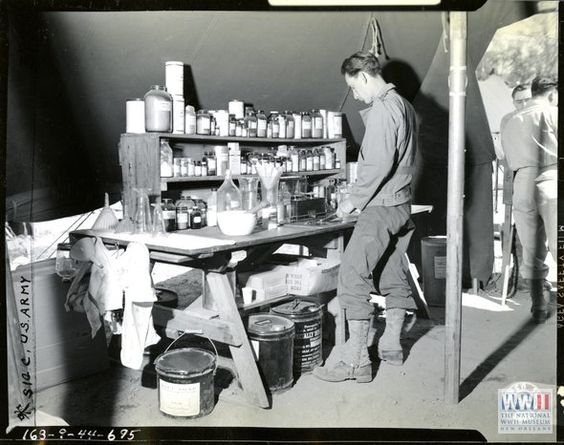
Soldier pharmacist at his work bench in the pharmacy at Hunter Liggett Military Reservation, 1944 (US Army photo via National WWII Museum)
If a pharmacist wanted to compound and dispense medications, his or her only option was to serve as an enlisted technician, with pay and privileges below that of an officer.
Fight for a Pharmacy Corps
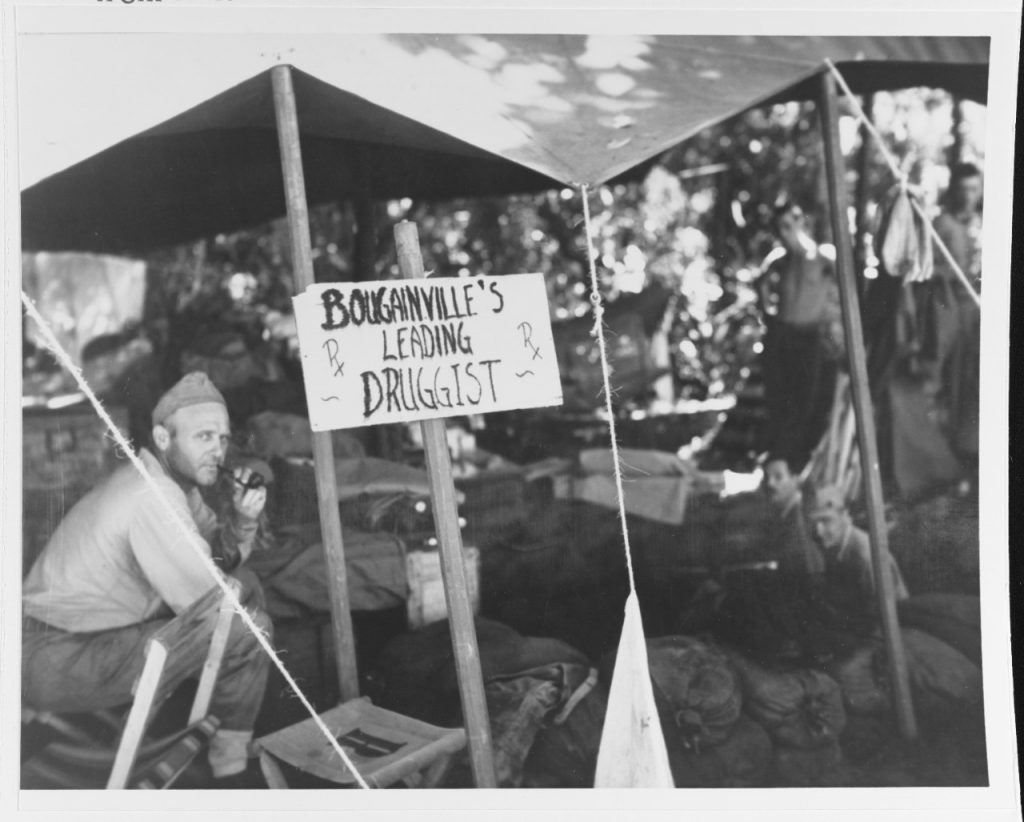
An enterprising Navy Pharmacist’s Mate sets up his operation under a tent at Cape Torokina, Bougainville, circa 1-9 November 1943, soon after the initial landings there (US National Archives: 80-G-56402)
The American Pharmaceutical Association (APhA) renewed the legislative battle for a commissioned Pharmacy Corps. The Surgeon General’s office argued that “Army pharmacy was simpler than civilian practice. The department’s three-month pharmacy technician course was sufficient preparation. There was little compounding. Since medications were furnished in tablet form, ‘any intelligent boy can read the label’” (1).
These arguments did not sit well with pharmacists—or with the general public. Dr. Evert Kendig of the APhA argued that “Army pharmacy technicians were given responsibility beyond that legally permissible in civilian life even as the Army misused its professional pharmacists” (1). Several incidents were reported of prescriptions improperly filled by technicians and of blatant physician prescribing errors that would have been caught by a pharmacist. Public opinion tipped the scale, and on July 12, 1943, President Roosevelt signed legislation authorizing the formation of the Pharmacy Corps.
Pharmacy Corps
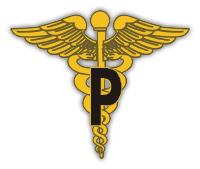
Insignia for the US Pharmacy Corps, WWII
The Pharmacy Corps was authorized to commission seventy-two pharmacists. However, the military moved slowly. In January 1944, after receiving 900 applications and conducting two-day written examinations, physical examinations, and interviews, twelve officers were commissioned. By January 1945, the Pharmacy Corps had only commissioned eighteen pharmacists. The other officers’ slots were filled by former MAC officers.
The drug distribution system did not change by the end of the war, but the formation of the Pharmacy Corps laid the groundwork for post-war reforms.
Resources:
- Ginn, Richard VN. The History of the US Army Medical Service Corps. Washington DC: Center for Military History, 1997. On US Army Medical Department Office of Medical History website. (Accessed 29 April 2021).
- Worthen, Dennis B. Pharmacy in World War II. New York: Pharmaceutical Products Press, 2004.

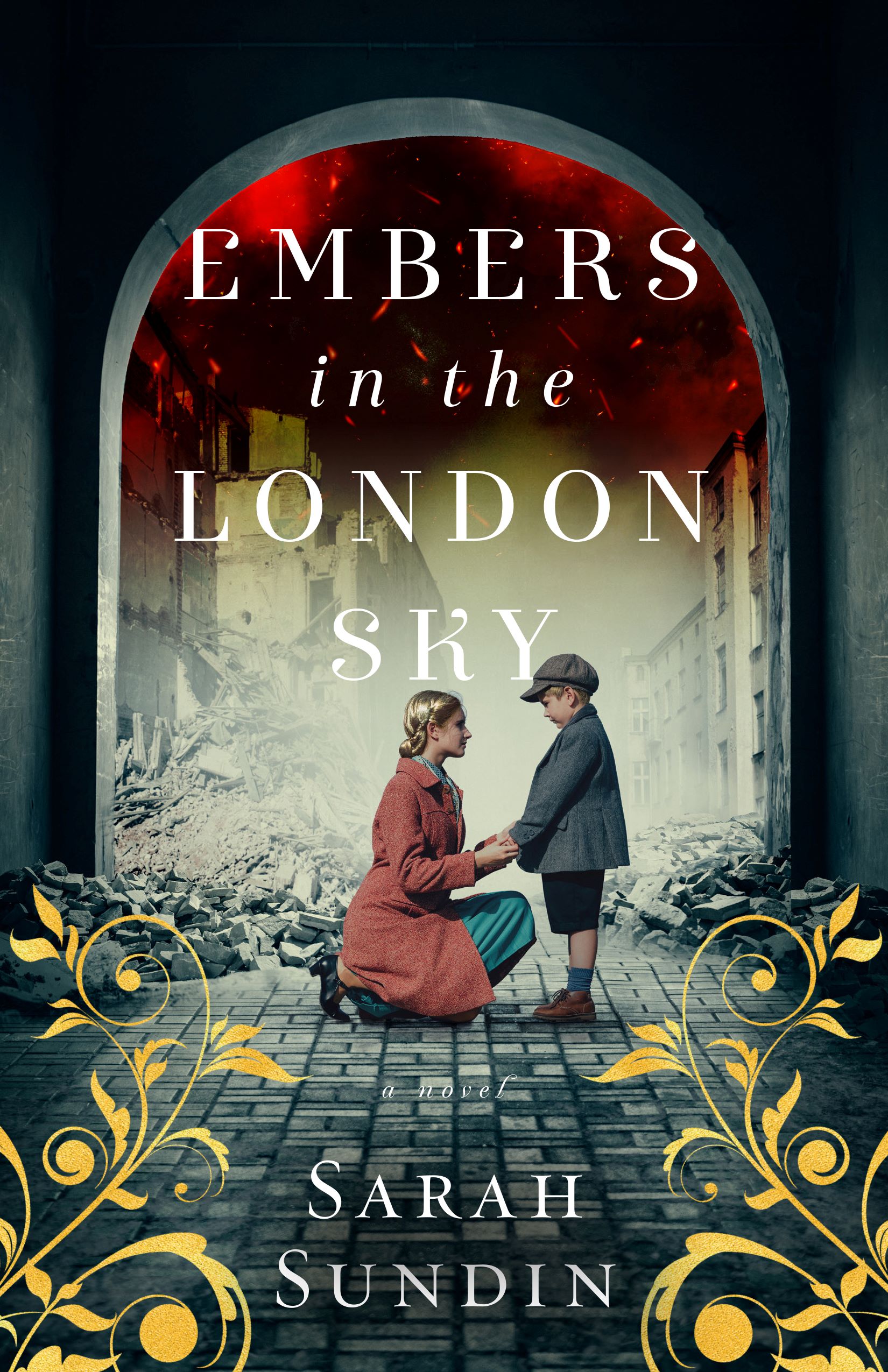
[…] As a pharmacist, I found much about my profession has changed, but some things have not—the personal concern for patients, the difficult balance between health care and business, and the struggle to gain respect in the physician-dominated health-care world. Today I’ll discuss the role of the pharmacist in the 1940s, next we’ll visit the local drugstore and see how its role changed during the war, and then I’ll review the role of pharmacy in the US military. […]
[…] As a pharmacist, I found much about my profession has changed, but some things have not—the personal concern for patients, the difficult balance between health care and business, and the struggle to gain respect in the physician-dominated health-care world. Earlier I discussed the role of the pharmacist in the 1940s, today we’ll visit the local drugstore and see how its role changed during the war, and then I’ll review the role of pharmacists in the US military. […]